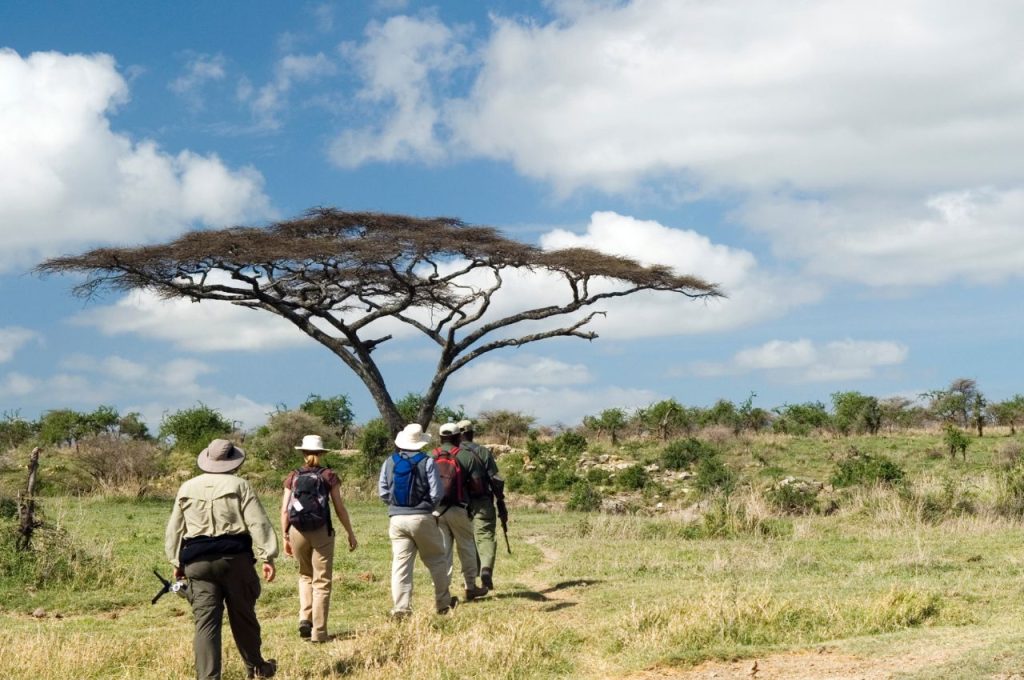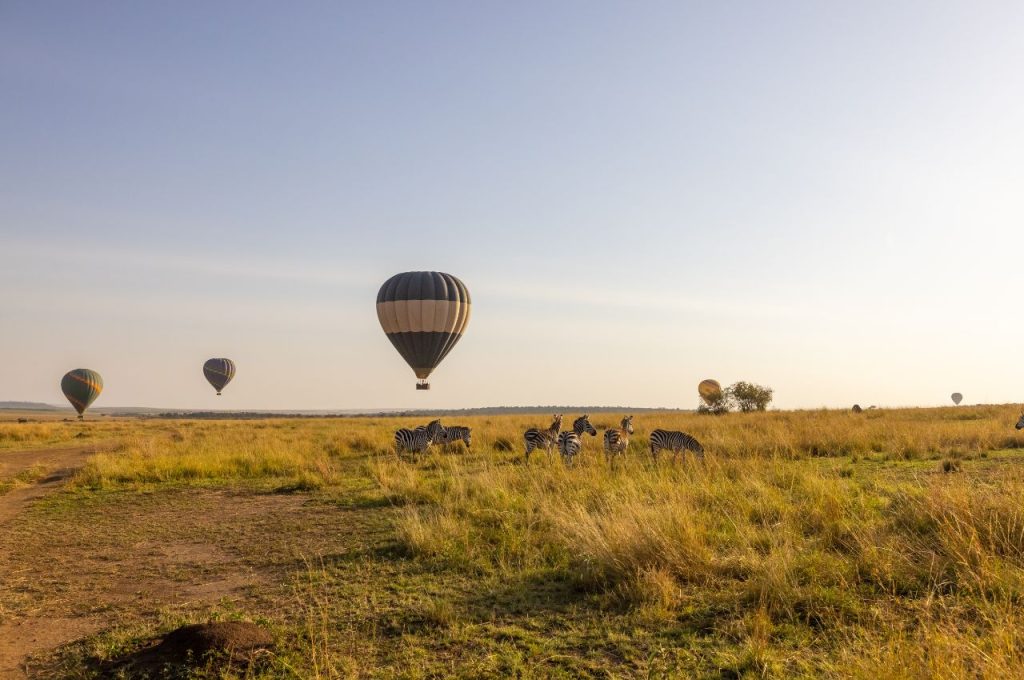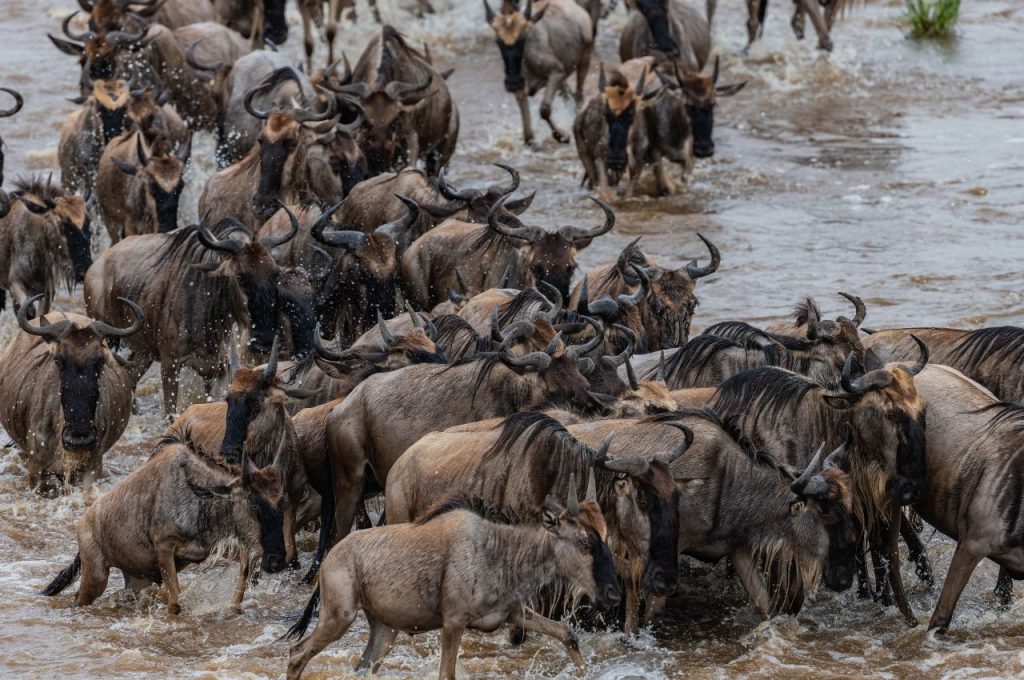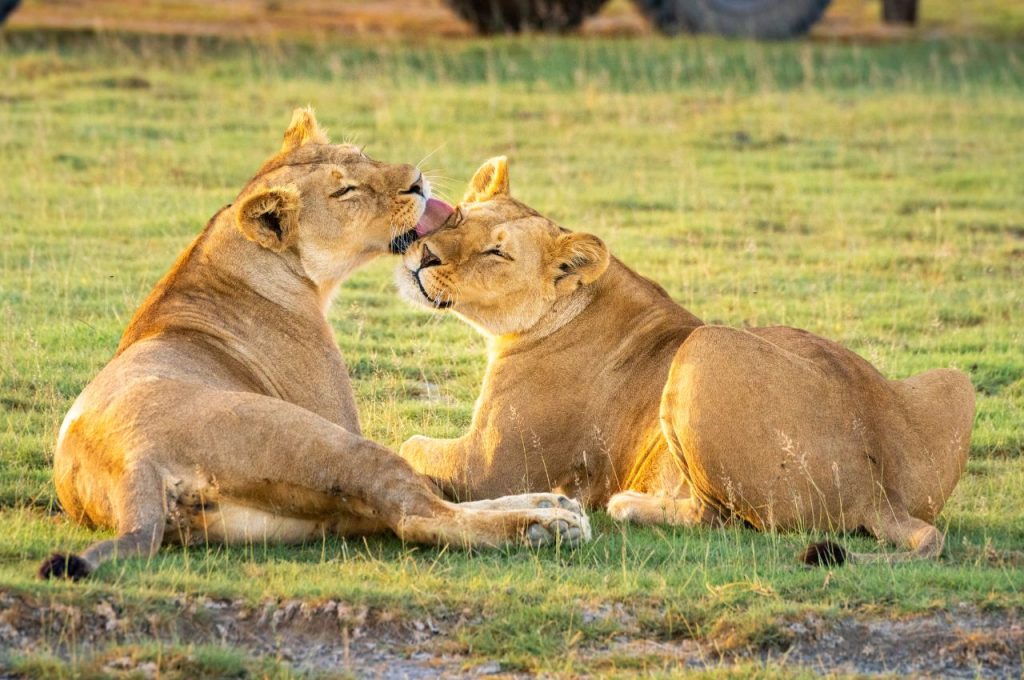Tanzania Cultural Safari

Tanzania Cultural Safari Home > Safari Blog A Tanzania cultural safari provides a rich and immersive experience, offering travelers the opportunity to engage with the diverse cultures and traditions of various indigenous communities. This type of safari goes beyond wildlife viewing, allowing you to connect with local people and learn about their way of life. Here’s a detailed overview of a cultural safari in Tanzania, focusing on visits to a Maasai Village, Hadzabe tribe, Maasai Boma, and Chaga people. Maasai Village Cultural Insights: The Maasai are one of the most famous ethnic groups in East Africa, known for their distinctive customs and dress. Visiting a Maasai village provides insight into their semi-nomadic lifestyle, social structures, and traditions. Activities: Welcome Dance: Experience the traditional Maasai welcome dance and songs. Home Visits: Tour the Maasai huts, known as bomas, and learn about their construction and daily life. Storytelling: Listen to stories about Maasai history, folklore, and spiritual beliefs from the elders. Crafts: Observe the creation of traditional Maasai beadwork and jewelry. Maasai Boma Community Life: A visit to a Maasai Boma (homestead) provides a deeper understanding of Maasai community life. These visits often focus on their pastoral lifestyle, cattle rearing, and social organization. Activities: Livestock Handling: Observe the Maasai herding their cattle and goats, and learn about the significance of livestock in their culture. Milk Processing: Discover traditional methods of processing and preserving milk. Rituals and Ceremonies: Depending on the timing, you might witness important rituals or ceremonies, such as circumcisions, weddings, or age-set initiations. Hadzabe Tribe Hunter-Gatherer Lifestyle: The Hadzabe are one of the last remaining hunter-gatherer tribes in Africa. They live in the Lake Eyasi region and have a unique way of life that has remained largely unchanged for thousands of years. Activities: Hunting Expeditions: Join Hadzabe hunters on a morning hunting trip to learn about their tracking and hunting techniques. Gathering and Foraging: Participate in gathering wild fruits, tubers, and honey. Traditional Skills: Learn about the Hadzabe’s use of bows and arrows, fire-making, and natural medicine. Cultural Exchange: Engage in conversations about their language, customs, and challenges they face in the modern world. Chaga People Agricultural Practices: The Chaga people live on the fertile slopes of Mount Kilimanjaro and are known for their intensive agricultural practices and elaborate irrigation systems. Activities: Farm Visits: Tour Chaga farms to see how they cultivate crops such as bananas, coffee, and maize. Irrigation Systems: Learn about the traditional furrow irrigation techniques that have sustained Chaga agriculture for generations. Traditional Homes: Visit traditional Chaga houses, often built into the mountainside, and understand their architectural techniques. Cultural Sites: Explore historical sites such as ancient caves and sacred groves used for rituals and as refuges during conflicts. Benefits of a Cultural Safari Authentic Experiences: Engage in genuine interactions with local communities, gaining a deeper understanding of their daily lives, traditions, and challenges. Support Local Economies: Contribute to the local economy by supporting community-based tourism initiatives. Cultural Preservation: Help in the preservation of cultural heritage by showing interest and respect for traditional practices and knowledge. Recent Posts All Post African Big Five Safari Blog Serengeti Migration Tanzania Safari Tanzania Cultural Safari June 25, 2024 Tanzania Walking Safari June 25, 2024 Arusha City June 25, 2024 A Journey to the Heart of Africa Join us on an unforgettable adventure to Tanzania’s national parks and game reserves. Our expert guides will lead you on a thrilling journey to spot African Animals and experience the beauty of African culture and the majesty of Africa’s wildlife. Book your spot! Categories African Big Five (2) Safari Blog (4) Serengeti Migration (1) Tanzania Safari (5)
Tanzania Walking Safari

Tanzania walking safari Home > Safari Blog A Tanzania walking safari offers a unique and immersive experience, allowing travelers to explore the stunning landscapes and diverse wildlife of Tanzania on foot. Here’s an overview of what you can expect from a walking safari in Tanzania: Highlights Close Encounters with Wildlife: Walking safaris offer a more intimate and thrilling way to experience Tanzania’s wildlife. Unlike vehicle safaris, you can observe animals up close in their natural habitats, often spotting smaller creatures and plants that are easily missed from a vehicle. Guided Experiences: All walking safaris are led by experienced and armed guides who are knowledgeable about the flora, fauna, and ecosystems. They ensure safety and provide insightful information about the wildlife and environment. Scenic Landscapes: Walk through diverse landscapes, from the open savannahs and rolling hills to dense forests and riverbanks. Each region offers its own unique beauty and biodiversity. Key Locations for Walking Safaris Serengeti National Park: While famous for its Great Migration, the Serengeti also offers excellent walking safaris. Discover the intricate details of the park’s ecosystem and enjoy sightings of giraffes, zebras, and various bird species. Ngorongoro Crater Highlands: Explore the highlands surrounding the Ngorongoro Crater, where you can encounter Maasai villages, stunning vistas, and diverse wildlife including buffaloes, zebras, and even predators. Tarangire National Park: Known for its large elephant herds and baobab trees, Tarangire offers walking safaris that bring you closer to its rich wildlife and birdlife. The park’s varied landscape includes swamps, rivers, and woodlands. Selous Game Reserve: This vast, less-visited reserve provides a remote and pristine setting for walking safaris. Encounter a variety of wildlife such as hippos, crocodiles, and numerous antelope species along the Rufiji River and its surrounding areas. Ruaha National Park: Experience the rugged beauty of Ruaha on foot, with opportunities to see elephants, lions, and the rare African wild dog. The park’s varied terrain includes rivers, rocky outcrops, and miombo woodlands. What to Expect Duration and Distance: Walking safaris can range from a few hours to multiple days. Day walks typically cover 5-10 kilometers, while multi-day treks may cover more ground with overnight stays in mobile camps or lodges. Safety: Safety is paramount on walking safaris. Guides carry firearms for protection, and guests are briefed on how to behave around wildlife. Always follow your guide’s instructions. Gear and Preparation: Comfortable walking shoes, lightweight clothing, hats, sunscreen, and insect repellent are essential. Binoculars and cameras are also recommended for wildlife viewing and photography. Cultural Interactions: Some walking safaris include visits to local villages, offering opportunities to learn about the traditions and lifestyles of indigenous communities like the Maasai. Environmental Awareness: Walking safaris emphasize low-impact travel and environmental conservation. Guides often share information about the importance of preserving natural habitats and wildlife. Benefits of a Walking Safari Deeper Connection with Nature: Walking through the wilderness allows for a more immersive experience, fostering a greater appreciation for the natural world. Unique Perspectives: Gain insights into the smaller details of the ecosystem, such as animal tracks, plant life, and insects, which are often overlooked during vehicle safaris. Physical Activity: Walking safaris provide a more active and engaging way to explore the wilderness, suitable for those who enjoy hiking and outdoor activities. Recent Posts All Post African Big Five Safari Blog Serengeti Migration Tanzania Safari Tanzania Cultural Safari June 25, 2024 Tanzania Walking Safari June 25, 2024 Arusha City June 25, 2024 A Journey to the Heart of Africa Join us on an unforgettable adventure to Tanzania’s national parks and game reserves. Our expert guides will lead you on a thrilling journey to spot African Animals and experience the beauty of African culture and the majesty of Africa’s wildlife. Book your spot! Categories African Big Five (2) Safari Blog (4) Serengeti Migration (1) Tanzania Safari (5)
Serengeti Hot Air Balloon Safari

Serengeti Hot Air Balloon Safari Home > Safari Blog A hot air balloon safari in the Serengeti offers a unique and exhilarating way to experience one of the world’s most famous wildlife destinations. Floating above the endless plains at dawn, travelers can enjoy a bird’s-eye view of the stunning landscapes and diverse wildlife, making it an unforgettable addition to any safari itinerary. Best Times to Fly: While hot air balloon safaris operate year-round, the best time to fly is during the dry seasons (June to October and January to March) when wildlife viewing is at its peak. The Great Migration, particularly from June to September, offers spectacular viewing opportunities from the air. Weather Conditions: Flights are dependent on weather conditions. In rare cases of unsuitable weather, flights may be postponed or canceled for safety reasons. What to Bring Clothing: Dress in layers to accommodate the cool early morning temperatures and the warmer conditions after sunrise. Camera: A good camera with a zoom lens is recommended to capture the stunning vistas and wildlife. Binoculars: Useful for spotting distant animals and enhancing the viewing experience. Booking and Availability Advance Reservations: Due to the popularity of hot air balloon safaris and limited availability, it is advisable to book well in advance. Cost: Prices vary depending on the operator and package but typically range from $500 to $600 per person. A hot air balloon safari over the Serengeti is a magical and serene experience, offering a unique perspective on one of the world’s most iconic wildlife regions. The combination of breathtaking views, abundant wildlife, and the tranquility of floating silently above the plains makes this an unforgettable adventure. Whether you’re a first-time visitor or a seasoned safari-goer, a hot air balloon safari adds a special touch to your Serengeti adventure. Recent Posts All Post African Big Five Safari Blog Serengeti Migration Tanzania Safari Serengeti Hot Air Balloon Safari June 10, 2024 Serengeti Migration Calendar June 10, 2024 Tanzania Big Five Safari June 10, 2024 A Journey to the Heart of Africa Join us on an unforgettable adventure to Tanzania’s national parks and game reserves. Our expert guides will lead you on a thrilling journey to spot African Animals and experience the beauty of African culture and the majesty of Africa’s wildlife. Book your spot! Categories African Big Five (2) Safari Blog (2) Serengeti Migration (1) Tanzania Safari (3)
Serengeti Migration Calendar

Serengeti Migration Calendar Home > Safari Blog The Great Migration in the Serengeti is one of the most spectacular natural events in the world, involving over 1.5 million wildebeest, along with hundreds of thousands of zebras and gazelles. This annual cycle of movement follows a clockwise pattern across the Serengeti in Tanzania and the Maasai Mara in Kenya, driven by rainfall and the availability of grazing. Understanding the migration calendar can help travelers plan their safari to witness different stages of this incredible journey. Migration Calendar January – March: Calving Season Location: Southern Serengeti, Ndutu Region, and Ngorongoro Conservation Area Highlights: This period marks the calving season, with over 500,000 calves born within a few weeks. The abundance of newborns attracts numerous predators, offering dramatic scenes of predator-prey interactions. The lush plains provide ample grazing for the herds. April – May: The Long Rains Location: Moving from the Southern to Central Serengeti Highlights: As the rains begin, the herds start to move northward. The landscape transforms into a verdant paradise, making it a beautiful time for photography. However, travel can be challenging due to muddy conditions. June – July: Grumeti River Crossing Location: Western Corridor and Grumeti Reserve Highlights: The herds face the first major obstacle—the Grumeti River. This period is characterized by dramatic river crossings, where wildebeest brave crocodile-infested waters. It’s a thrilling time for observers. August – September: Mara River Crossing Location: Northern Serengeti and Maasai Mara (Kenya) Highlights: One of the most famous and perilous stages of the migration, the Mara River crossing involves huge herds plunging into the river, facing strong currents and predators. This event is a bucket-list experience for many safari-goers. October – November: Northern Serengeti to Eastern Serengeti Location: Northern Serengeti to Eastern Serengeti and Loliondo Highlights: After crossing the Mara River, the herds move back towards the Serengeti. This period is less chaotic but offers excellent game viewing opportunities as the herds spread out and graze. December: Return to Southern Serengeti Location: Southern Serengeti, Ndutu Region Highlights: The herds complete their cycle, returning to the southern plains as the short rains begin. This time sets the stage for the next calving season, with lush green pastures and a high concentration of wildlife. The Serengeti Migration is a dynamic and continuous process, offering unique experiences throughout the year. Whether you’re looking to witness the birth of wildebeest calves, the drama of river crossings, or the sheer scale of the herds grazing across the plains, understanding the migration calendar can help you plan the perfect safari. This natural wonder showcases the incredible biodiversity and resilience of wildlife in East Africa, making it a must-see for any nature enthusiast. Recent Posts All Post African Big Five Safari Blog Serengeti Migration Tanzania Safari Serengeti Migration Calendar June 10, 2024 Tanzania Big Five Safari June 10, 2024 A Journey to the Heart of Africa Join us on an unforgettable adventure to Tanzania’s national parks and game reserves. Our expert guides will lead you on a thrilling journey to spot African Animals and experience the beauty of African culture and the majesty of Africa’s wildlife. Book your spot! Categories African Big Five (1) Safari Blog (1) Serengeti Migration (1) Tanzania Safari (2)
Tanzania Big Five Safari

Tanzania Big Five Safari Home > Safari Blog Tanzania, a gem in East Africa, is renowned for its breathtaking landscapes and diverse wildlife. One of the most exhilarating experiences it offers is the Big Five Safari. This adventure allows travellers to encounter five of the most iconic and majestic animals: the African lion, African elephant, Cape buffalo, African leopard, and rhinoceros. Here’s an overview of what to expect on a Tanzania Big Five Safari. Some of the best time for spotting the Big Five in Tanzania is during the dry season (June to October), when animals tend to congregate around water sources. African Lion Often found in prides within the Serengeti and Ngorongoro Crater, these majestic predators are a highlight of any safari. The sight of a lion hunting or basking in the sun is a memory to cherish. African Elephant These gentle giants roam freely in the vast savannas of Tarangire and Serengeti National Parks. Watching elephants interact in their natural habitat is both humbling and awe-inspiring. Cape Buffalo Known for their unpredictable nature, Cape buffaloes are most commonly seen in large herds. They are found in various national parks across Tanzania, including the Selous Game Reserve. African Leopard Elusive and solitary, leopards are best spotted in the Serengeti and Ruaha National Parks. Their impressive climbing skills often allow for unique viewing opportunities as they rest in the branches of acacia trees. Rhinoceros The critically endangered black rhino can be spotted in the Ngorongoro Crater and Mkomazi National Park. Conservation efforts are ongoing to protect this rare and majestic creature. Safari Experience A Tanzania Big Five Safari is not just about the animals; it’s about the entire experience. Travelers can enjoy: Game Drives: Conducted in the early morning and late afternoon, these provide the best opportunities to see wildlife. Guided Walks: Led by knowledgeable guides, these walks offer a closer look at the flora and fauna. Cultural Tours: Visits to local Maasai villages provide insight into the traditional lifestyles and customs of the indigenous people. Luxury Accommodations: From tented camps to lodges, options are available to suit all preferences, often located in the heart of the wilderness. Safari Destinations Serengeti National Park: Famous for the Great Migration, it offers year-round opportunities to see the Big Five. Ngorongoro Crater: A UNESCO World Heritage Site, this natural wonder is a haven for wildlife, including the Big Five. Tarangire National Park: Known for its large elephant population and iconic baobab trees. Selous Game Reserve: One of the largest faunal reserves in the world, it provides a more remote safari experience. Ruaha National Park: Offers a less crowded, yet equally spectacular safari experience. Recent Posts All Post African Big Five Safari Blog Tanzania Safari Tanzania Big Five Safari June 10, 2024 A Journey to the Heart of Africa Join us on an unforgettable adventure to Tanzania’s national parks and game reserves. Our expert guides will lead you on a thrilling journey to spot African Animals and experience the beauty of African culture and the majesty of Africa’s wildlife. Book your spot! Categories African Big Five (1) Safari Blog (1) Tanzania Safari (1)
